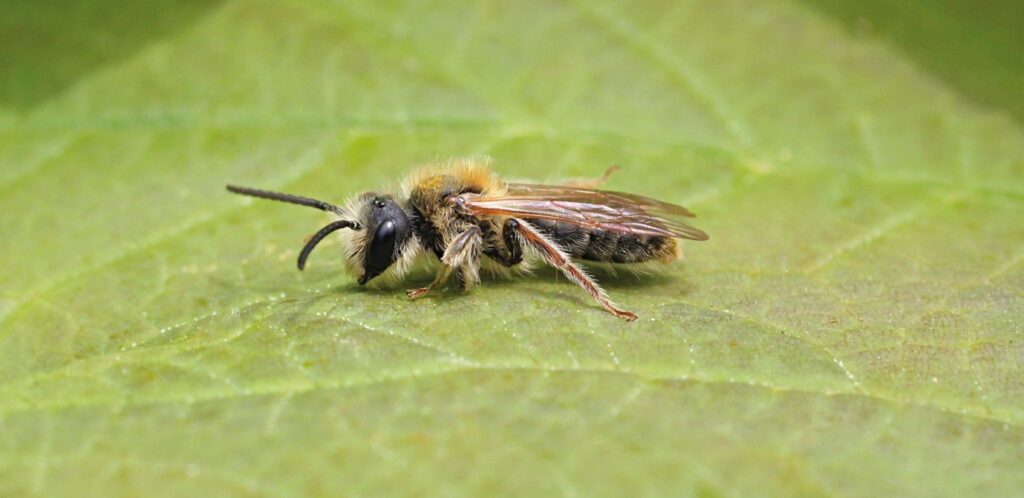14/03/2023

There are 67 different types of mining bees in the UK. (Europe has 600 mining bee species, and there are 1,500 worldwide).
They get their common name, from the way they construct their nests. They mine into lose soils and create underground burrows where they lay their eggs. They are solitary bees (so they don’t live in a colony with a queen), but often nest next door to each other in dense congregations.
The Orange-tailed mining bee (Andrena haemorrhoa), is also known as the early mining bee because they are one of the earliest springtime mining bees to appear. They leave a little pile of spoil around a hole in the ground when they make their way out of the underground nest which could be in a park, garden lawn, sports field, or a south-facing slope or bank.
The male (pictured above) is around 7-9.5m with a brown fluffy thorax and tiny orange hairs at the tip of his bottom. He comes out a couple of weeks before the females and will be foraging on spring-flowering plants such as dandelions, blossoming trees, blackthorn, willows and gorse. The nectar will give him the energy for mating. A crowd of males will often buzz around a nest eagerly awaiting the ladies.
The slightly larger female Orange-tailed mining bees is much more striking with a rusty-red pile of hair on her thorax. Her appearance is thought to explain the bee’s scientific name, which derives from the Greek haema (blood) and rheo (flow). She also has tufts of orange hairs on the tip of her bottom. But you’ll have to wait until next month to see her collecting pollen from spring-flowering plants and scouting close to the ground for somewhere to nest.
How to help Orange-tailed mining bees
- Plant their favourite food -these short-tongued bees will feed on most early spring-flowering plants such as:
- Willow trees
- Blackthorn or Gorse shrubs.
(If you don’t have a large garden, speak to your local park about planting more early food for bees.)
- Don’t pull up dandelions. Often dismissed as weeds, dandelions provide an early source of nectar and pollen for many bees.
- Don’t use weedkillers – not only do they kill weeds, which are good food for bees, but they also poison the environment.
- Provide a home by:
- creating a south-facing bank of sand or lose soil
- having a chemical-free lawn to allow mining bees to burrow in it.
For more information about how to make cob bricks, other bees to see this month and how to help them sign up to Alison’s Buzz newsletter
Words: Alison Benjamin, Urban Bees
Photo credits: Penny Metal

